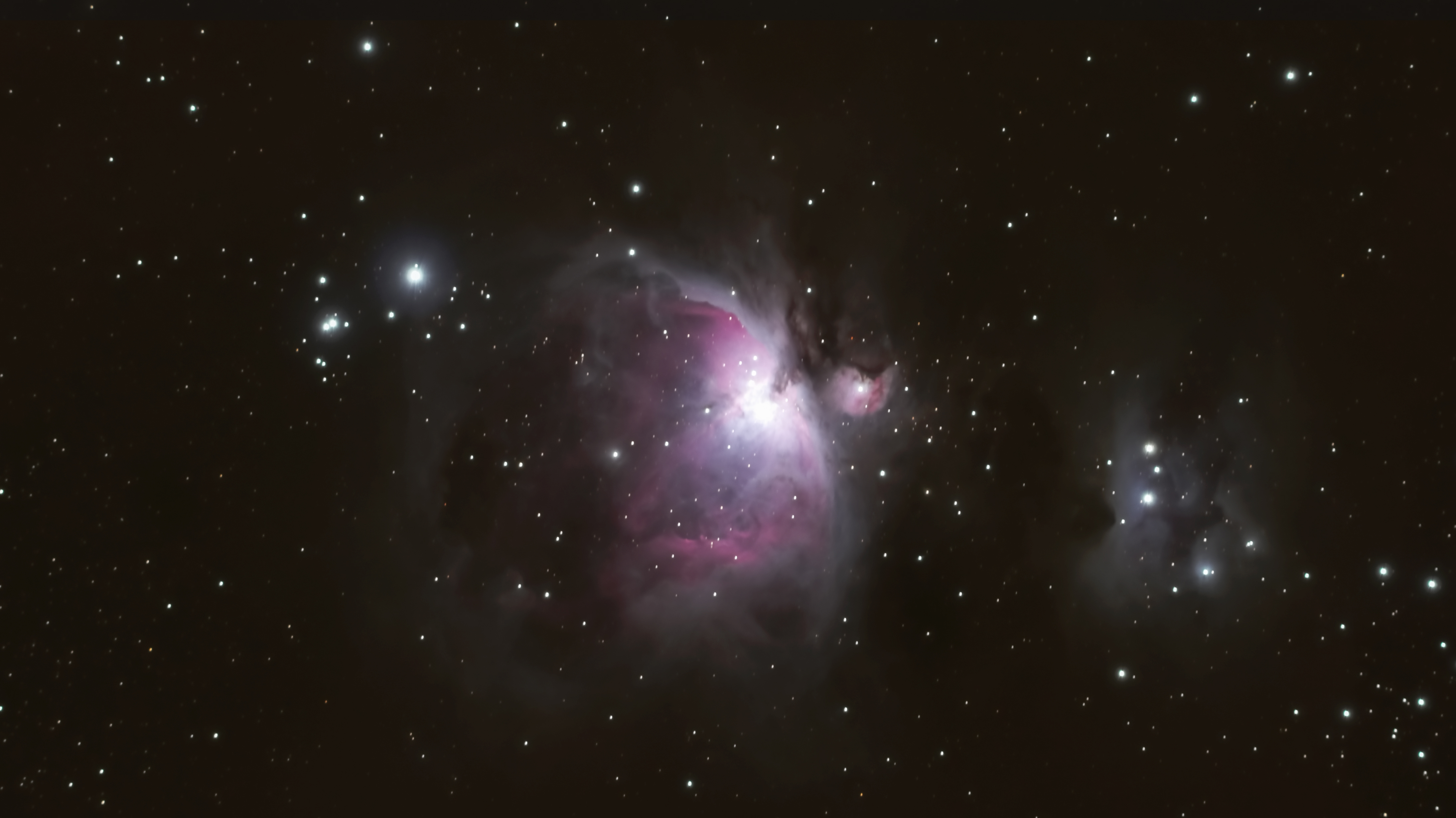Its been cloudy the last few days and quickly moving towards a full moon so I decided to take a page out of AstroBackYard and revisit some older data. Looking though my archives for images which could use a some work I found this photo from January 1st 2019 of the Orion Nebula (Messier 42).
Equipment:
Scope – William Optics Zenith Star 80 ED II with Field Flattner
Camera – Lumix GH4 ( 141 Subs of 25 sec at iso 4000 )
Mount – Modified Losmandy GM8
The original photo (above)was aligned, stacked, and stretched using Photoshop CC. In order to improve the image I took the original data and processed it via Pixinsight with 2 notable changes.
1. I only used 120 sub (removed 20 for not having perfectly round stars).
2. I’m still tweaking my Pixinsight back-end after the stretch so I did use photoshop for the final tweaks to the curves.
The photo below is what I ended up with, as you can see, there was a lot more data in the photo that I was able to recover and the Nebula really pops with detail. You can see there was likely a bit of dew on the lens (whoops) but overall a significant improvement!

Now that isn’t to say I can’t get similar results in Photoshop, I simply don’t know how and pixinsight is purpose built to do it. While the latter software does have a steep learning curve I’m quickly finding new and even better ways to process the data. Plus I don’t mine the learning curve too much as the software has a one time fee while adobe insists on getting paid each month.
Bonus: Lumix GH4 vs. Nikon Z6
A small side note, I’m just started using a Nikon Z6 for my astrophotography as of early 2019. One of the advantages of this new camera (besides full frame and 24MP) is that it has a significantly lower noise floor to the GH4.
So this completely unscientific comparison is to show GH4 photo in the dead of winter (likely -15C or colder) vs. a Z6 photo at around 5-10C (so a 25C difference if not more). As they are both un-cooled cameras the noise floor quickly rises with the outside temperature. Historically this made astrophotography basically pointless in the late-spring and summer months as the noise was excessive and the nights were quite short when using the GH4 (coincidentally when Orion is a viable target in the sky). However this year I’m imaging a lot of summer targets which I normally don’t do now that I have the Z6 which still operates well until about 25C (we had some hot nights and I noticed it started to show some cracks in the noise floor at elevated temperatures).

I snapped this photo (above) right before I lost Orion for the season this spring with the Z6, not the ideal conditions as it was lower in the horizon but its ten 30sec subs at ISO1600 (10x30x1600 = 480,000 exposure vs. 120x25x4000= 12,000,000 exposure).
The conclusion here, is when you compare its output to what the GH4 vs. Z6 produced I’m expecting great things this fall and winter as temperature drop and “finger’s crossed” so does the Noise floor of the Z6 (and for other brands, the Sony a7III has a similar chip).
